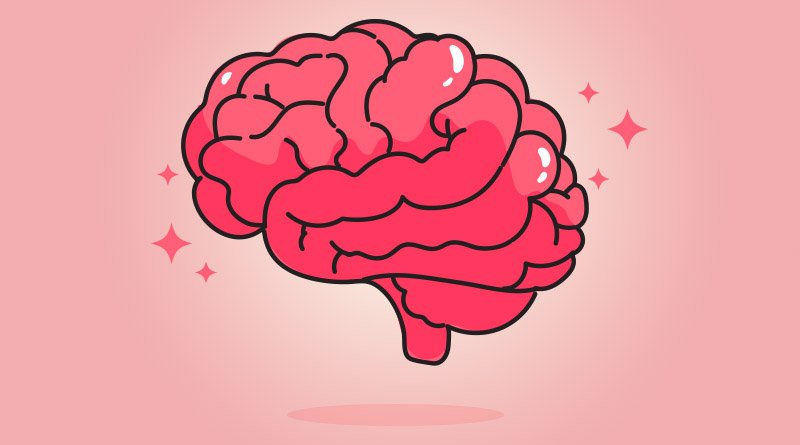What is Neuroplasticity? A Journey into the Adaptive Brain

|
Getting your Trinity Audio player ready...
|
Welcome to a fascinating journey through the universe of neuroplasticity, also known as brain or neuronal plasticity. This is one of the most inspiring topics in modern neuroscience because it shows that our brain, far from being a static structure, is a living, constantly transforming organism.
Neuroplasticity is the brain's extraordinary ability to modify, adapt, and reorganize itself in response to experiences, learning, injuries, and environmental changes. In other words, it allows us to be lifelong learners.
In this article, we'll explore the basics of this neuroscientific marvel and its impact on our understanding of cognition and brain development.
The concept of neuroplasticity
Consider the brain as an intricate maze of pathways and interconnections. Synapses, comparable to small connecting structures, establish links between neurons, facilitating communication between them.
In the past, it was believed that this network was fixed after adulthood. However, recent research has refuted this notion. Surprisingly, our brains are highly malleable and subject to adaptation. In fact, the brain never stops changing!
This malleability is crucial for the acquisition of knowledge, the formation of memories and the ability to retrieve information, even enabling continuous learning, recovery from injuries and the modification of brain functions.
Thus, it is not limited to being a mere phenomenon, but stands out as an essential characteristic of the human brain.
"Neuroplasticity is the process by which connections between neurons (synapses) are created, strengthened, or restructured. This is essential for us to learn, memorize, overcome trauma, and develop cognitively."
How does neuroplasticity work?
THE neuroplasticity occurs constantly, regardless of the occurrence of neurological damage. As an illustration of this phenomenon, in an experiment conducted by scientist Pascual-Leone, adults with healthy vision were blindfolded for five days. During this time, they experienced the life of blind individuals, learning to read Braille and improving their auditory skills. Magnetic resonance imaging revealed that the visual cortex began to be activated not only by vision, but also by hearing and touch. The brain was adjusting.
Although the mechanisms underlying neuroplasticity are not yet fully understood, they are known to involve a variety of factors, including:
- Generation of new synaptic connections: Synapses are the connections that facilitate communication between neurons. Structural neuroplasticity occurs when new synapses are formed or existing ones are strengthened.
- Modification of synaptic activity: Synaptic activity can be altered through processes such as synaptic plasticity and long-term potentiation (LTP). Functional neuroplasticity occurs when the activity of existing synapses is modified.
There are different forms of neuroplasticity:
- Synaptic Neuroplasticity: Refers to the modification of synapses between neurons.
- Structural Neuroplasticity: Involves changes in the physical structure of the brain.
- Functional Neuroplasticity: It is related to the functional reorganization of brain areas.
Neuroplasticity and NLP: Reprogramming the Brain with Intention
THE Neuro-Linguistic Programming (NLP) It's an approach that uses language, mental patterns, and behavior to generate transformations. And guess what makes this possible? Neuroplasticity.
Thus, NLP acts precisely on the neural pathways that shape beliefs, habits, and emotions. By creating new associations and deconstructing limiting patterns, it stimulates synaptic reorganization.
That's why techniques like anchoring, reframing, and modeling work so well: they activate plastic mechanisms in the brain, fostering new ways of thinking, feeling, and acting. Thus, neuroplasticity is the biological basis of the mental reprogramming proposed by NLP.
Real-life applicability
The adaptive capacity of brain plasticity plays a fundamental role in our daily lives, enabling learning, overcoming challenges and recovering functions after injuries. In addition, it is essential to promote stimulation early to maximize these adaptive benefits.
In addition to its contribution to learning and cognitive development, brain plasticity has significant practical applications. Neurological rehabilitation therapies exploit this phenomenon to restore function after brain injury, while the understanding of neuroplasticity is revolutionizing educational approaches, emphasizing the need for methods that encourage brain malleability.
Thus, neuroplasticity plays a crucial role in several functions, including:
- Apprenticeship: Allowing the brain assimilate new information and skills.
- Memory: Enabling the brain to store and retrieve information.
- Development: Enabling continued brain growth and development throughout life.
- Injury Recovery: Helping the brain recover from damage, such as that caused by strokes and cerebrovascular accidents.
How to stimulate neuroplasticity
It is feasible to boost the adaptive capacity of neuroplasticity through specific activities in a proactive manner. To this end, cognitive exercises, involvement in musical practices, learning new languages and performing physical activities have been shown to have a positive impact on brain malleability. Therefore, integrating these practices into the daily routine emerges as an effective strategy to keep the brain agile and healthy throughout life.
Below are some suggestions for achieving this goal:
- Explore new learnings: Incorporating new knowledge, whether it’s learning a new language or developing a new skill, can foster neuroplasticity
- Expose yourself to new stimuli: Exposure to new experiences, such as traveling or meeting new people, proves to be a driving stimulus for neuroplasticity
- Cultivate healthy habits: Maintaining healthy habits, including a balanced diet, regular exercise and adequate sleep, can promote neuroplasticity in a beneficial way.
Physical activity and neuroplasticity: the body moves, the brain responds
Although the terms "physical activity" and "exercise" are used interchangeably, there is a technical difference. Physical exercise is a structured activity with a defined goal (such as weight training, running, or yoga). Physical activity is any bodily movement that increases energy expenditure (such as climbing stairs or dancing).
Both benefit neuroplasticity, but regular exercise is the one that demonstrates the greatest neuroscientific impact.
After all, regular exercise stimulates the release of BDNF (brain-derived neurotrophic factor), a protein that promotes neuron growth and the formation of new synapses. It also improves mood, attention, and sleep—all factors that enhance brain plasticity.
Therefore, moving your body is more than a matter of physical health: it is a powerful catalyst for mental and emotional transformations.
Influencing factors
Several elements influence the neuroplasticity, such as:
- Age: It is known that during childhood and adolescence there is a greater expansion of the adaptive capacity of neuroplasticity. However, it continues to manifest itself throughout life.
- Environment: Exposure to new stimuli and experiences emerges as a driver of neuroplasticity.
- Lifestyle: Adopting healthy habits, such as a balanced diet, regular exercise and adequate sleep (as mentioned above), can promote the occurrence of neuroplasticity.
- Emotional health: Trauma and emotions impact how the brain adapts
“You can stimulate neuroplasticity by practicing new activities, exercising your body regularly, cultivating healthy habits, and keeping your brain exposed to constant experiences and learning.”
Connection between neuroplasticity and mental health
One of the most promising topics in neuroscience is the relationship between neuroplasticity and mental disorders. Research shows that depression, anxiety, and PTSD (Post-Traumatic Stress Disorder) are associated with rigid neural connections. Therefore, promoting brain plasticity allows for new perceptions and emotional responses.
In this sense, interventions such as cognitive-behavioral therapy, meditation and creative activities have been shown to help in this process.
In short…
THE neuroplasticity is a testament to our brain’s incredible adaptive capacity. As we explore this phenomenon, we are reminded that we are constantly evolving beings, shaped by our experiences and our environment.
By understanding and valuing this phenomenon, we open doors to optimizing brain potential and improving quality of life. This is just the beginning of our fascinating journey into the universe of neuroscience and brain plasticity.
So embrace change and allow your brain to blossom in the subtle dance of neuroplasticity.
FAQ – Frequently asked questions about neuroplasticity
1. What is neuroplasticity in simple words?
It is the brain's ability to adapt, change, and learn from experiences.
2. Does neuroplasticity only happen in children?
No. Although it is more intense in childhood, it remains active throughout life.
3. How can I stimulate neuroplasticity in my daily life?
Practicing new activities, physical exercise, meditation, good nights of sleep and maintaining intellectual curiosity.
4. What is the relationship between neuroplasticity and mental health?
A more plastic brain has a greater capacity to overcome trauma and adjust emotionally.
5. Can neuroplasticity help with stroke and injury recovery?
Yes. It is essential in rehabilitation, allowing other parts of the brain to take over compromised functions.
Recommended reading:
The brain that transforms itself – by Norman Doidge
Memory in Transformation: How Neuroplasticity Shapes Our Past, Present, and Future – by
Image: Freepik
Article originally published on 12/02/2023 and updated on that date.

Marcel Castilho is an expert in neuromarketing, neuroscience, mindfulness and positive psychology. In addition to being an advertiser, he also has a Master's degree in NLP – Neurolinguistic Programming. As the owner and founder of the communications agency VeroCom and also of the digital agency Vero Contents, he has been studying human behavior for over 30 years.




